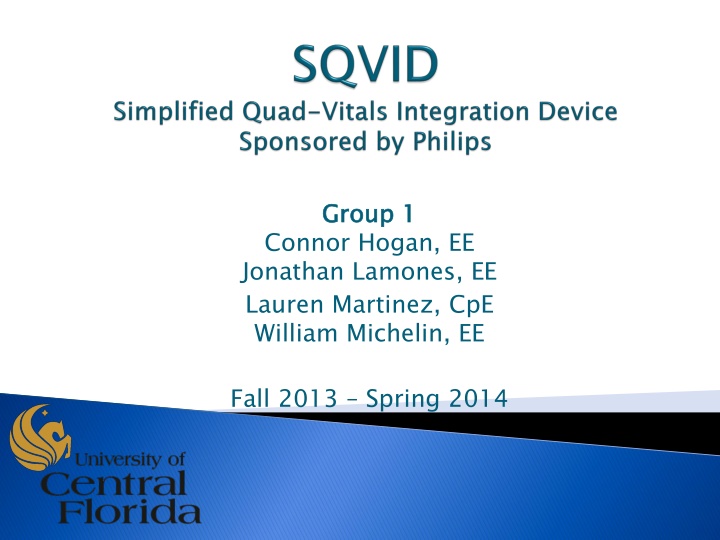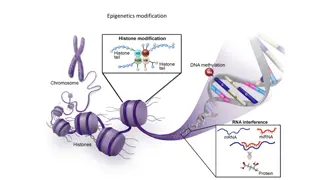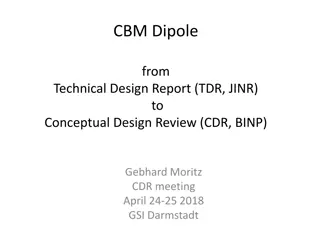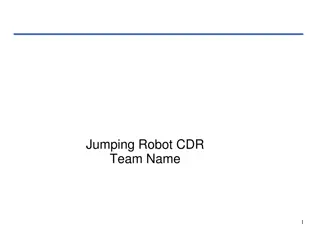
Innovative Wireless Vital Sign Monitoring System for MRI Patients
Revolutionize patient care with a streamlined cabling solution for MRI scans, designed to enhance comfort and mobility. The SQVID Project integrates vital sign monitoring wirelessly, ensuring patient safety and convenience during hospital stays. Adhering to Philips' standards, this system incorporates ECG, SpO2, CO2, and NiBP signals into a central connection box at the foot of the patient's bed, promoting efficiency and patient comfort.
Download Presentation

Please find below an Image/Link to download the presentation.
The content on the website is provided AS IS for your information and personal use only. It may not be sold, licensed, or shared on other websites without obtaining consent from the author. If you encounter any issues during the download, it is possible that the publisher has removed the file from their server.
You are allowed to download the files provided on this website for personal or commercial use, subject to the condition that they are used lawfully. All files are the property of their respective owners.
The content on the website is provided AS IS for your information and personal use only. It may not be sold, licensed, or shared on other websites without obtaining consent from the author.
E N D
Presentation Transcript
Group 1 Group 1 Connor Hogan, EE Jonathan Lamones, EE Lauren Martinez, CpE William Michelin, EE Fall 2013 Spring 2014
Hospital patients facing an MRI scan are monitored for various vital signs during the scan and hospital stay. Cables are unnecessarily large and not only complicate transportation of the patient, but contribute to patient discomfort. Philips seeks a more streamlined cabling solution for their healthcare customers to increase the comfort of their patients.
Four vital signs are typically monitored in a patient: ECG, SpO2, CO2, and NiBP. ECG and SpO2 already transmit wirelessly to Philips software for analysis, but each go to a battery powered handheld. The SQVID Project aims to transmit the remaining two vitals wirelessly and incorporate all four into a central box located at the foot of a patient s bed. The SQVID Project aims to transmit the remaining two vitals wirelessly and incorporate all four into a central box located at the foot of a patient s bed.
Transmit the CO2 and NiBP signals wirelessly. Incorporate all four vital signals into a central connection box located at the bottom of the patients bed. Guarantee all materials used are MRI safe. Ensure the central connection box is light weight with a small footprint for mobility and patient comfort. All hardware development must adhere to Philips proprietary standards and approval as the sponsor and customer.
Hardware Requirement HRS-001 HRS-002 Hardware Requirement Description Description Software Requirement SRS-001 SRS-002 Software Requirement Description Description Cabling materials will be MRI safe. Connector materials will be MRI safe. The system will be standalone. Vital signs connected will be recognized automatically. The software system will attain the wireless data sent from the central connection box. Embedded software will convert A/D and D/A. Embedded software will convert and transmit wireless signals. HRS-003 Connection box manufacturing materials will be MRI safe. SRS-003 HRS-004 All power sources will be an approved DC supply. The central connection box will not exceed 10 lbs. The central connection box will not exceed 1 x1 x1 in size. Each connector will not exceed a 2 x3 footprint. Total cable length will be 8 ft. long. SRS-004 HRS-005 SRS-005 HRS-006 HRS-007 HRS-008 HRS-009 The central connection box will allow up to four connections, and operate with at little as one. All cabling will resist bending or looping. HRS-010
ECG SpO2 NiBP CO2 Data Display Philips Magic! Philips Magic!
MRI Patient Monitoring System Umbilical Cable Assembly Data Acquisition Unit Base Station Sensor Connectors Amplifier Stage Wireless Receiver Filter Stage Main Utility Connector Error Correction Sample and Hold Analog to Digital Wireless (bluetooth) Transmitter Cable Fabrication Software Platform
Microcontroller Wireless CO2 Sensor NiBP Sensor SPO2 & ECG Sensors Power System
Controller TI MSP430 Description Well suited to low power and bioinstrumentation solutions. Familiarity with the architecture from embedded systems laboratory. Low cost and easy prototyping. ST ARM More powerful and ubiquitous platform. Newer microcontrollers from this family have increased performance with decreased power consumption. Atmel AVR High availability of resources and open source support. Low-power and wireless capabilities in the zigbee wireless standard. Microchip PIC 8-bit microprocessors available for very small low power applications. Robust third-party support and development kits. Larger and more powerful units available as well.
Name Features TiWi-uB2 Bluetooth Module Bluetooth 2.1+EDR and BLE 4.0 Integrated Band-Pass Filter Miniature Footprint: 7 mm x 7 mm 250kbps Max data rate XBee Pro 60mW Wire Antenna - Series 1 (802.15.4) 6 10-bit ADC input pins 128-bit encryption Built-in antenna 1 mile (1500m) range Up to 2000 ft Indoor range with high-gain antenna XBee Pro 900 XSC RPSMA 10 Kbps data rate Up to 24 dBm (250 mW) Transmit Power IEEE 802.11 b/g TI CC3000 Embedded IPv4 TCP/IP stack Works with low MIPS and low-cost MCUs with compact memory footprint
Transducer: Motorola MPX2050DP (344C case) Port orientation allows for structural longevity Dual-transducer acts as filter (reference to ambient pressure/temp)
What outputs should we expect to see from our transducer? Patient State Hypotension Desired Hypertensive Emergency Systolic (mmHg) < 90 90 - 119 180 Diastolic (mmHg) < 60 60 - 79 110 Max. Output (mV) Max. Target Output (mV) Min. Target Output (mV) Min. Output (mV) 40 21.36 4.26 0
Bandpass Filter: TL084 Operational Amplifier ?1= ?3 ?1= ?3 Common low cutoff 1 1 ????= = = 0.339 ?? 2??1?1 2? 47 ?? 10 ? 1 1 ? ?? 1= = = 2.41?? 2??2?2 1 2??4?4 2? 2.2 ?? 30 ? 1 2? 2.2 ?? 20 ? ? ?? 2= = = 3.62?? ??1= ?2 = 30 ? 10 ? = 3 ?1 ??2= ?4 = 20 ? 10 ? = 2 ?3 ??1 ??2= 3 2 = 6 ?????(?????) =??????(?????) =200 = 33.3 ??1 ??2 6 ?????=49.4 ? + 1 (from AD620 datasheet) RG ?????(?????) 1=49.4 ? 49.4 ? ??(?????) = 33.3 1= 1.53?
Initial Specifications Rechargeable 5 Volts 6 Volts 2 cubic inches (including battery compartment) Non-ferromagnetic or tested for up to 3 Teslas 0.3 lbs or < 140 grams Initial Specifications
Power Stream Battery Vs. Magmedix Power Stream Battery Vs. Magmedix Battery Battery $335 for two C batteries $20 per battery (max) 3.7 volts 3.9 volts No ferromagnetic materials Tested for up to 3T Available specifications Obscure specifications
Specifications Specifications Voltage (V) Milli-ampere- hours (mAH) Thickness x Width x Height (size in mm) Weight (grams) 3.7 600 5x30x40 11 Non- ferromagnetic
Ideal Charger 7.2 Volt Charger output 1200 mAh output Non-magnetic or 3T resistant 120 V at 50/60 Hz input Ideal Charger
Part Qty. 1 Unit Price (USD) (Provided) ECG Expression MRI Monitoring System - ECG component SpO2 Expression MRI Monitoring System SpO2 component 1 (Provided) NiBP Pressure cuff 1 (Provided) MPX2050 Pressure Transducer 1 12.20 AD620 Instrumentation Amplifier 1 9.43 TL084 Operational Amplifier 2 0.68 CO2 CAPNO2 mask 1 (Provided) CAPNOSTAT CO2 Sensor MSP430F5529 1 1 (Provided) 12.99 Microcontroller Wireless SimpleLink Wi-Fi CC3000 1 9.99 Power Supply 7.2V Lithium-Polymer Non-ferromagnetic Battery 2 20.00 7.2V AC/DC adapter 1 12.00 30.00 Total 13 parts 14 77.97 95.97
Finalize a parts and budget list Get the cables and schematics for sensors Strengthen relationship with Philips Acquire parts and begin testing
Research Research Hardware Design Hardware Design Software Development Software Development Prototype Prototype Testing Testing Total Total 0% 0% 20% 20% 40% 40% 60% 60% 80% 80% 100% 100%






















